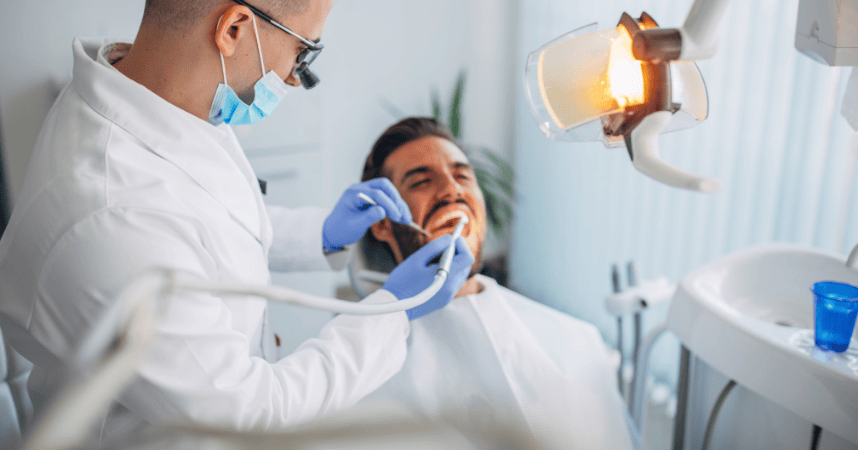- Mon - Fri: 8 AM - 5 PM.
- 1806 Professional Dr A, Sacramento, CA 95825

Wisdom teeth are the third set of molars that usually make their debut in late adolescence or early adulthood—typically between the ages of 17 and 25. While some people never develop wisdom teeth at all, for many others, these molars emerge with little fanfare or cause for concern. However, in a significant number of cases, wisdom teeth come with a set of complications that may require dental intervention.
Understanding the signs that your wisdom teeth are coming in can help you prepare for any necessary treatment and avoid more serious oral health issues down the line. Whether your wisdom teeth are growing in properly or causing problems, being aware of the symptoms is the first step toward maintaining optimal dental health.
One of the earliest and most common signs that your wisdom teeth are emerging is a dull, persistent ache at the very back of your mouth. This discomfort often comes and goes but tends to become more consistent as the tooth continues to push through the gum line. It may occur on one or both sides of the mouth and is usually felt behind your second molars.
In some cases, the pain might intensify when eating, brushing, or even speaking. This discomfort arises as the tooth tries to break through the gums, sometimes causing inflammation or pressure against neighboring teeth.

Swelling and redness around the site where the tooth is erupting is another sign your wisdom teeth may be coming in. As the tooth pushes against the soft tissues, the area can become irritated and inflamed. Your gums might be tender to touch or appear more puffy than usual.
When your gums are swollen, brushing or flossing around them can be painful, making it harder to keep your mouth clean. This increases the risk of plaque accumulation and infection if not properly managed.

As wisdom teeth come in—especially if they’re impacted or growing in at an angle—they can exert pressure on the jaw and surrounding tissues. This can result in stiffness, difficulty opening your mouth fully, or a sensation that your jaw is “locked.”
If you’re noticing restricted movement in your jaw or any popping sounds while chewing or yawning, it’s a good idea to get evaluated by a dentist. These signs can indicate that the wisdom tooth is putting stress on the temporomandibular joint (TMJ)
The pain caused by erupting wisdom teeth isn’t always limited to the mouth. Due to the interconnected network of nerves in your face and jaw, it’s not uncommon to experience headaches or earaches as your wisdom teeth begin to emerge.
This referred pain can be confusing, especially if you don’t realize it’s coming from your jaw. A dental examination can help determine whether your wisdom teeth are the underlying cause.

If you’ve had orthodontic work in the past or naturally straight teeth, you may notice new crowding as wisdom teeth push through. This is particularly common when there isn’t enough room in the jaw to accommodate new molars.
Wisdom teeth can push against nearby teeth, which may cause them to move out of their place. This may change your bite, affect your smile’s appearance, or even reverse the effects of braces. Regular dental checkups and X-rays can detect these changes before they become too noticeable or problematic.
As wisdom teeth erupt, they can create small flaps in the gums where food particles and bacteria easily become trapped.These gaps are difficult to clean and can lead to infections or cavities. Because of this, you might notice constant bad breath or a bad taste in your mouth, even if you brush and floss regularly.
These signs often point to pericoronitis, which is when the gum around a partly erupted wisdom tooth becomes inflamed. If not treated well, it can lead to more severe problems.

In some cases, the clearest sign that your wisdom teeth are coming in is that you can actually see them. If you notice small white or yellowish points breaking through the gums at the back of your mouth, those are likely the tops of your wisdom teeth.
This doesn’t necessarily mean the process is trouble-free, though. Even if the tooth is visible, it may not be erupting in the right direction or have enough room to grow in fully. It’s still essential to have your dentist assess their position and health.
Not everyone will experience complications with their wisdom teeth, but early evaluation can help prevent issues like impaction, infection, or misalignment. Dentists usually check wisdom teeth with X-rays and suggest removing them only if they might cause problems for your oral health.
If you’re experiencing any of the signs listed above—especially pain, swelling, or jaw stiffness—it’s wise to schedule a dental appointment. A professional evaluation will determine whether your wisdom teeth are growing in normally or if they require intervention.
In some cases, dentists may suggest removing wisdom teeth even before symptoms develop, particularly if X-rays show that the teeth are impacted or likely to cause crowding. This proactive approach can help you avoid more complex problems down the line.

Final Thoughts
Wisdom teeth are a natural part of dental development for many people, but they don’t always come-in peacefully. Recognizing the signs early allows you to act quickly, avoiding more serious problems like infection, tooth damage, or jaw pain.
If you suspect your wisdom teeth are coming in, the best thing you can do is schedule a dental consultation. With the right care and timely attention, you can navigate this phase of oral development with minimal discomfort and lasting dental health.
Quick Links
Services
Areas We Serve
Contact info
Open hours
first signs of wisdom teeth coming in, signs of wisdom teeth coming in, tanda gigi geraham tumbuh, how to tell if wisdom teeth are coming in, symptoms of wisdom teeth coming in, tanda tanda gigi geraham bungsu tumbuh, signs wisdom teeth are coming in, what are the signs of wisdom teeth coming in